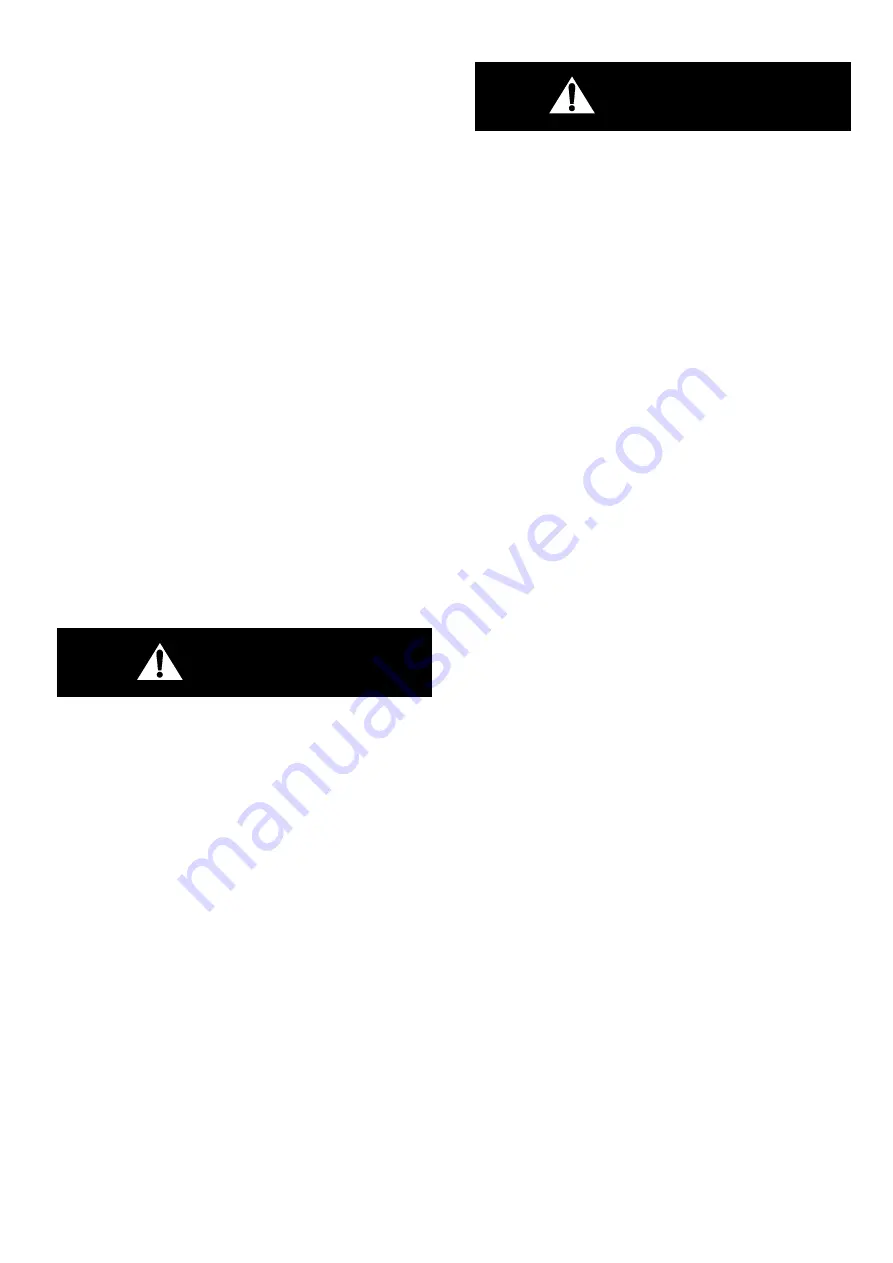
G80XW/XF, G115XW/XF, G150XW/XF, G200XW/XF - 50HZ
OPERATION & MAINTENANCE MANUAL
71
G100XW/XF, G135 XW/XF, G170XW/XF, G225XW/XF - 60Hz
GENERAL INFORMATION
GENERAL INFORMATION
After purchasing an engine over time, each of the
engine’s parts will age and the initial engine performance
cannot be maintained.
Regular inspection and replacement of components
according to the recommended regular inspection table
allows you to maintain an engine with the optimum
conditions and best performance for a long period and
prevent unexpected accidents in advance.
Users are responsible for the proper operation and
maintenance of engines. Engines should be inspected
and replaced by officially-certified technicians in a work
space with the specified tools and facilities. Observe the
following instructions to perform inspections.
1. Perform inspections on a flat floor without a slope.
2. Excluding extreme circumstances, only perform
inspection while the engine is stopped.
3. Disconnect the '-' terminal of the battery before
performing an inspection.
4. Perform inspection in a well ventilated space.
5. Use a wooden prop or lift when working under the
engine.
DANGER
Wait until the engine is sufficiently cooled before
starting inspection after operating the engine. Failure
to observe this may result in serious burns.
You may be poisoned by the emissions when starting
an engine in a closed space. Perform inspection in a
well-ventilate space.
unless it is absolutely necessary, do not perform
inspection under an engine.
When
carrying
out
engine
inspection
or
maintenance, ensure there are no naked flames
within the vicinity of the machine. Fuel, oil, or
batteries may generate gas, causing fire.
If inspecting the engine while it is running, do not
wear accessories such as necklaces, rings, watches
or gloves. Such accessories may become stuck in
rotating parts while the engine is running and may
cause serious bodily injury.
CAUTION
Incorrect inspection methods may cause engine
faults.
Cleaning an engine with liquids such as water or wax
may cause breakdown of electrical parts.
Be careful when handling batteries, cables, and
electrical wirings because current flows through
those parts.
Do not put heavy things or apply excessive force or impact
on the fuel-related units.
Ensure that the battery terminals ('+' and '-') are
connected to the correct terminal. Connecting the '+'
and '-' terminals to the wrong terminal may cause
damage to the electrical unit parts and fire.
ROUTINE INSPECTION
Routine inspection is an inspection performed by an
engine operator before operating the engine. It should be
performed to protect operator's safety, as well as the
engine.
The following is a minimal check list.
1. Check whether the engine smoothly starts and the
levels of fuel, oil, and coolant are within the normal
range.
2. Check if any discharged emissions are colored and if
the exhaust contains toxic gas elements.
3. Check whether abnormal noise occurs after starting
an engine or not.
4. Check whether oil or water is leaking.
















































